Last week my sister and I along with her friends from line-dancing class skipped town for a four-day getaway to Utah, some seven hours drive from our home in California, about three hours from Las Vegas, Nevada.
On our way to Utah, we stopped by Nevada's oldest and largest state park called the Valley of Fire, so called for its red Aztec sandstone formations, an impressive nature preservation area in the Mojave Desert.

The drive into the Valley of Fire took us on a very scenic route, with splashes of color in the surrounding landscape.




The background story is that the Valley of Fire, over a million years ago was submerged under the sea. When the water receded the place became a landscape of mudflows and shallow streams. Eventually, the water completely dried off and the area became a vast sand dune with an epic landscape of unique forms and colors of rock formations.


Minerals like iron oxide gave bright colors to the rocks and on a sunny day the sun’s reflection made the rocks appear like they are on fire. This is where it got its name Valley of Fire.

We drove around the area for about 40 minutes, stopping at strategic spots for photos and trying to get the perfect selfies.
Looking at the stunning hardened sand dunes with one-of-a-kind shapes and formations made us feel like we were on another planet.



Over the period wind and water had washed off the bright red color on some rocks revealing a lighter shade of sandstone.
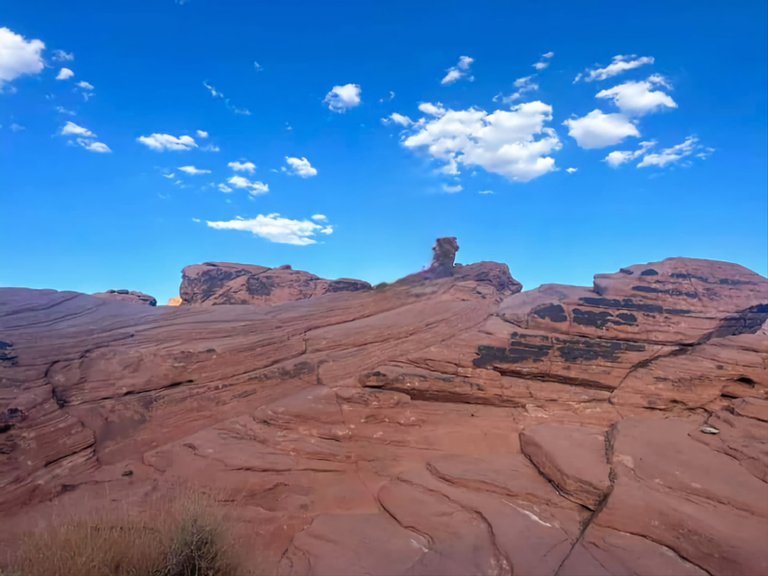


Getting Up Close with the Iconic Formations
BEEHIVES
Strange-looking sandstone formations that look like giant beehives, are not only a beautiful example of the unique design that nature can create but is an illustration of geological crossbedding (sedimentary layers intersecting at different angles with each other).
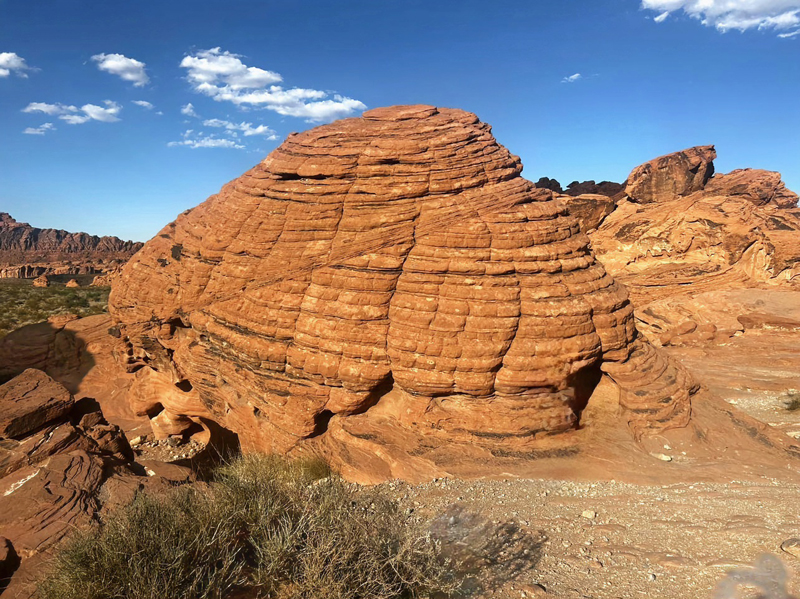
The grooved lines represent different layers of sedimentary rocks.
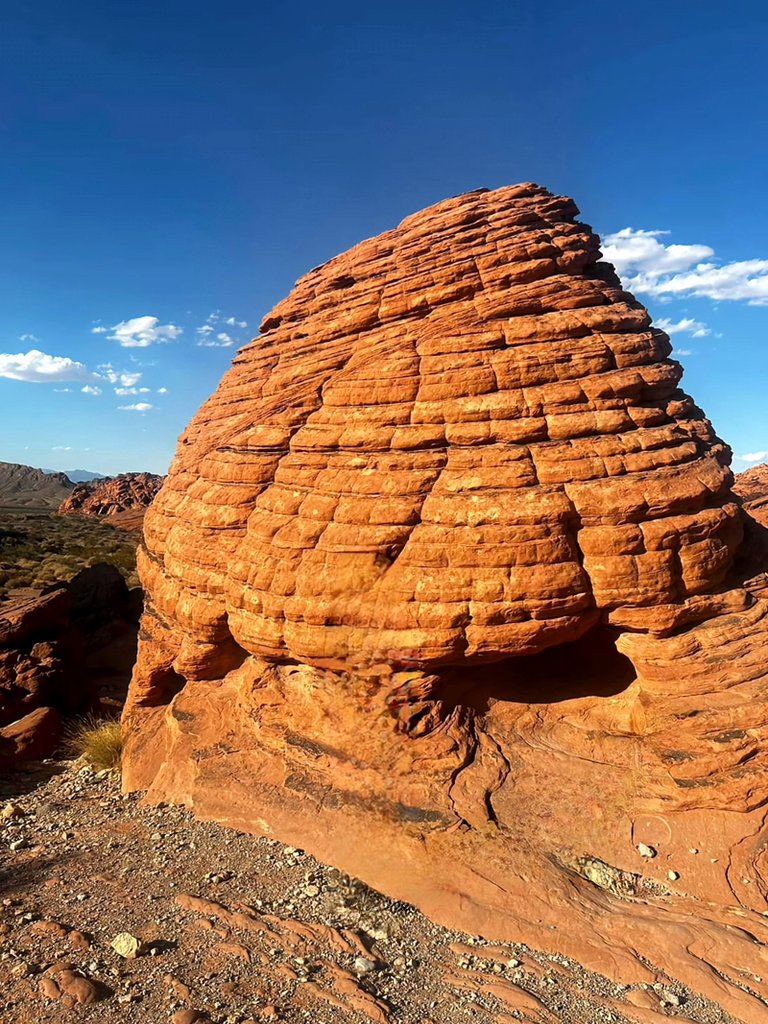
There are areas where climbing is not allowed but there are trails around for easy access. This is a fun place to explore and for photos.
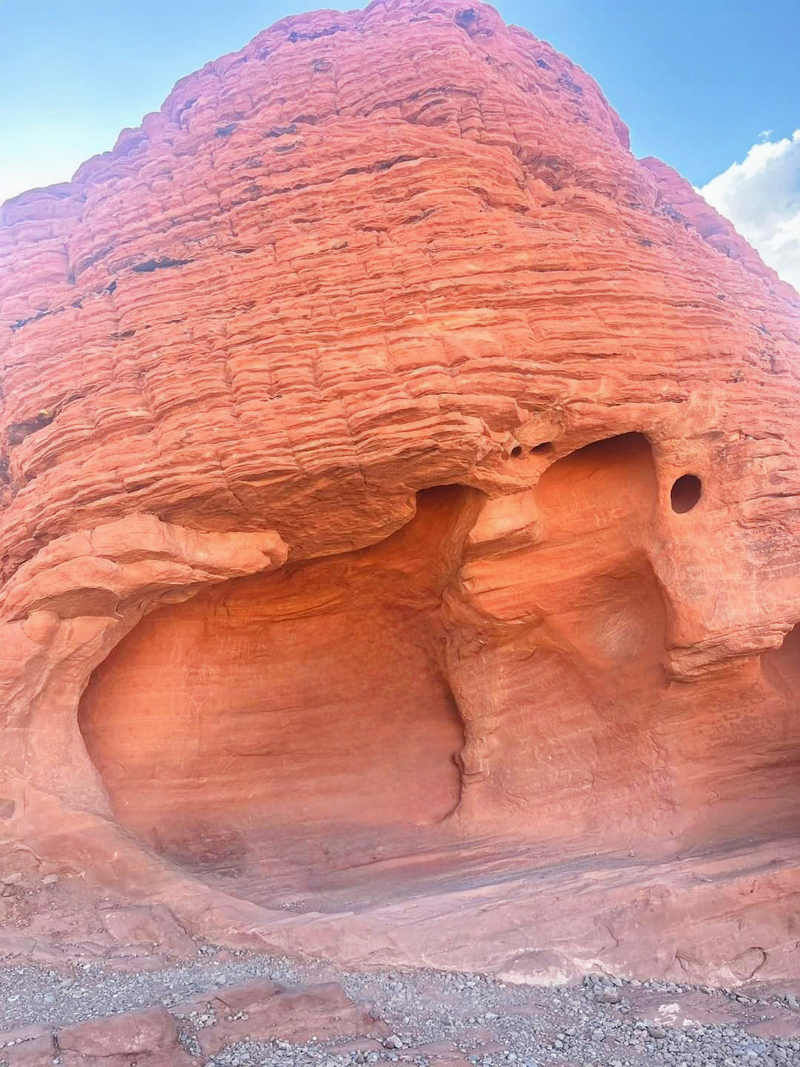
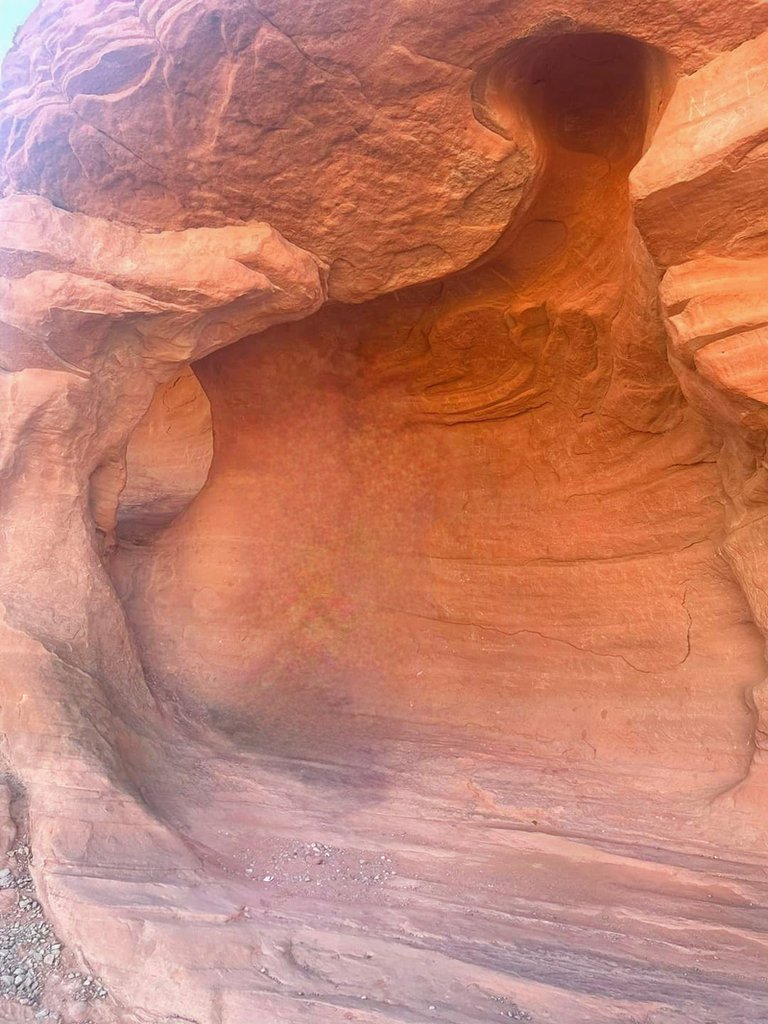
ATLATL ROCK
This is a single massive boulder on top of a sandstone outcrop, about 50 feet high from the ground. It is named after a tool used to propel a dart before arrows were invented.
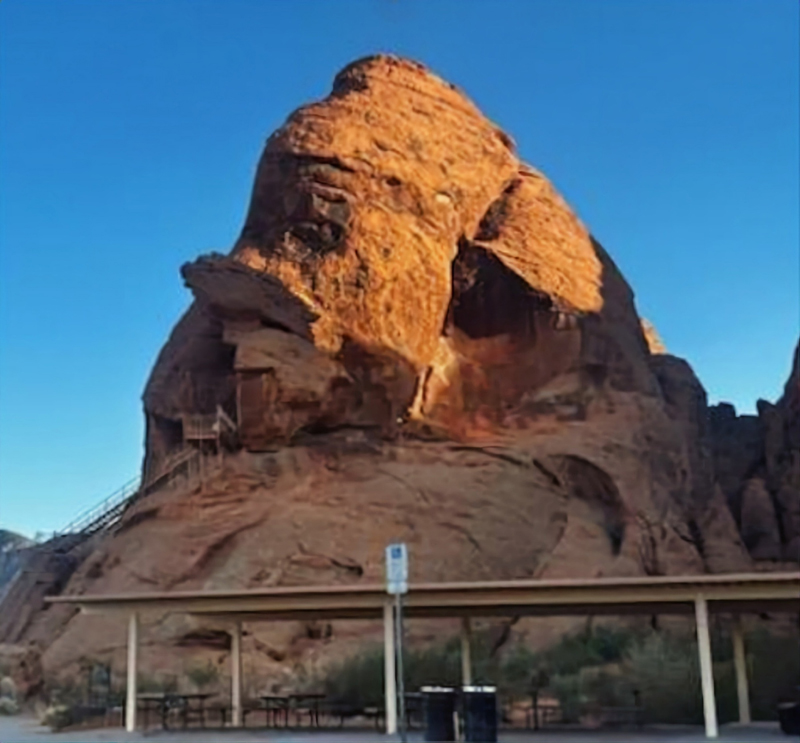
A picnic area with tables, barbeque grills, and water spigots is on the ground.
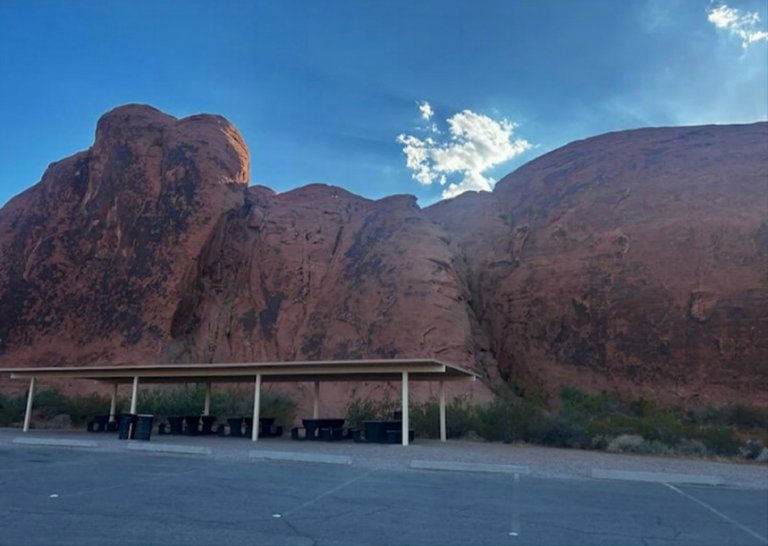
Climbing to the top of Atlatl is not permitted. A metal staircase painted red-orange to match the rock and the surrounding area, was installed at the side of the rock formation.
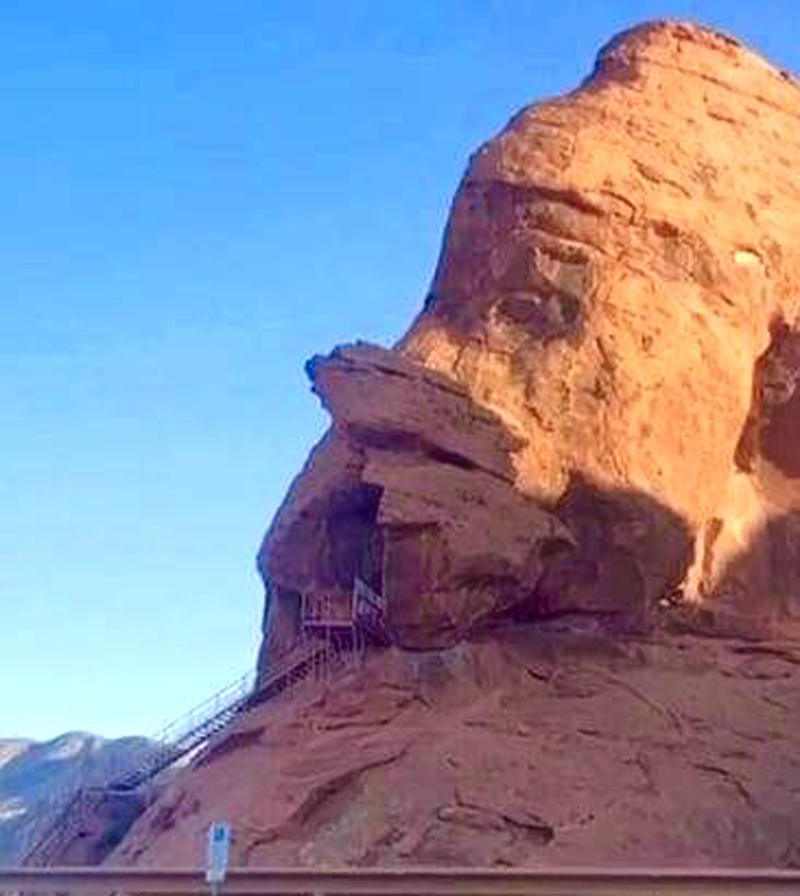
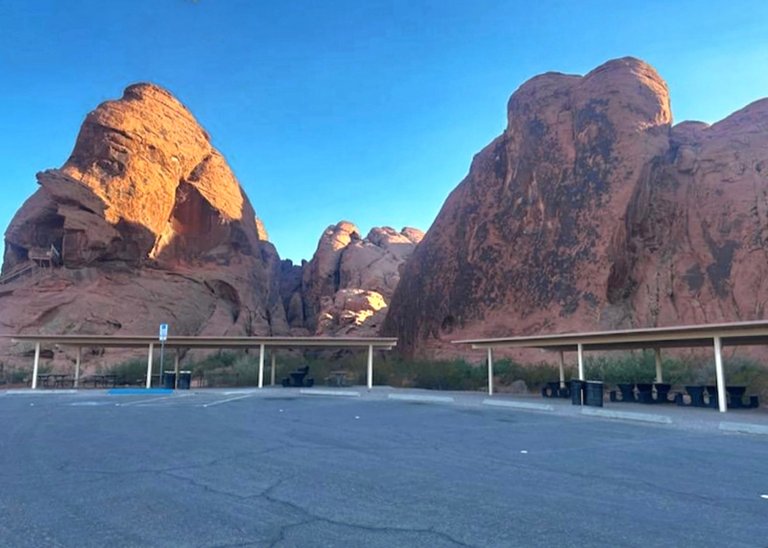
We would have climbed up the staircase on the Atlatl to see some petroglyphs carved into the rocks but we were out of steam, after having been in the desert for more than six hours. Or more, I think.
So we resumed our road trip to Utah which offers more of this massive colorful sandstone and iconic views of nature. In my next blog, I promise to show more astounding pictures. Thanks for reading.









